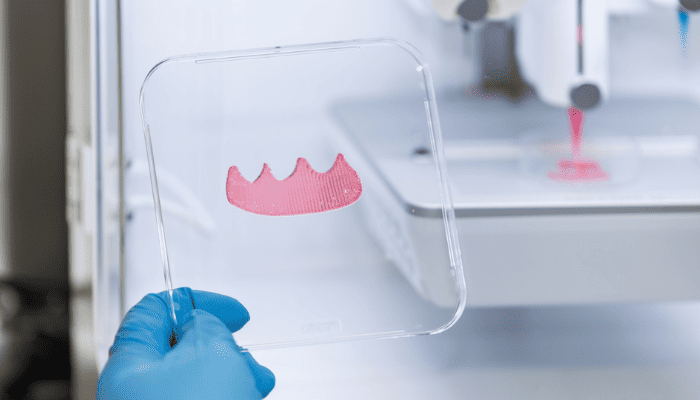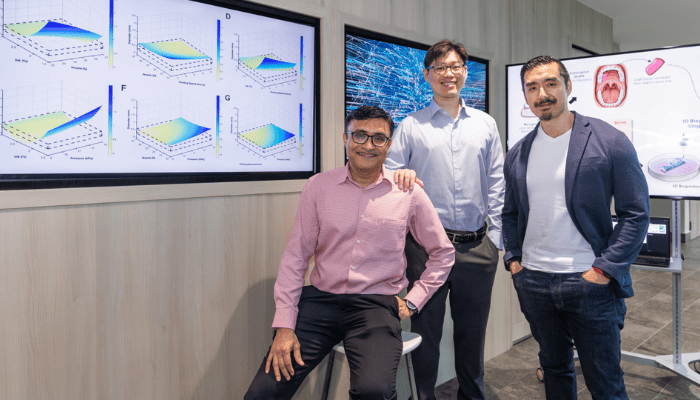Singapore Researchers Use AI and 3D Bioprinting to Personalize Gum Tissue Grafts

A team from the National University of Singapore (NUS) has devised a method for creating customized gum grafts by combining 3D bioprinting and artificial intelligence (AI). The new technique, led by Assistant Professor Gopu Sriram from the Faculty of Dentistry, is said to offer a more adaptable and less intrusive solution than traditional methods, which often require tissue to be harvested from the patient’s mouth, a process that is sometimes painful and limited by the amount of tissue available.
This approach could therefore simplify the treatment of gum problems, such as those associated with periodontal disease or complications from dental implants. By creating grafts perfectly adapted to each patient, it could not only improve the effectiveness of treatments, but also reduce discomfort and limit the risk of complications, such as infections, during the recovery period.

3D Bioprinting and AI: A Breakthrough for Personalized Gum Grafts
Traditionally, these grafts are performed by taking tissue directly from the patient’s mouth, but this method can be uncomfortable, offers a limited amount of tissue and can lead to complications. To overcome these drawbacks, researchers have turned to 3D bioprinting. They have also developed a special bioink that promotes cell regeneration while ensuring accurate printing and stable tissue structure.
The success of 3D bioprinting depends on several key factors, such as extrusion pressure, printing speed, nozzle size, bioink viscosity and printer temperature. In the past, these parameters were adjusted manually, by trial and error, a time-consuming and costly process. To improve this step, the integration of AI has simplified the work.
Professor Dean Ho, head of the biomedical engineering department at NUS, explained, “To speed up the 3D bioprinting process, we integrated AI into our workflow to address this critical bottleneck. This approach greatly streamlines the process by reducing the number of experiments needed to optimize the bioprinting parameters — from potentially thousands to just 25 combinations.”
Gum grafts created by bioprinting showed excellent biomimetic characteristics, with cell viability in excess of 90% immediately after printing and for 18 days in culture. They also retained their shape and structure, and analyses revealed the presence of essential proteins and a multilayered organization similar to that of natural gums.
“This research demonstrates how AI and 3D bioprinting can converge to solve complex medical problems through precision medicine,” added Assistant Professor Sriram. “By optimizing tissue grafts for individual patients, we can reduce the invasiveness of dental procedures while ensuring better healing and recovery”

Professor Gopu Sriram, Dr Jacob Chew and Professor Dean Ho from NUS present their innovative AI-assisted 3D bioprinting method for creating personalized gum grafts
This ability of oral tissues to repair themselves without scarring could have wider applications. The findings of this study could indeed help develop grafts for other tissues, such as skin, and thus improve the healing of skin wounds without leaving marks. You can find out more in the press release from the University of Singapore HERE.
What do you think of the use of AI and 3D bioprinting for gum tissue grafts? Let us know in a comment below or on our LinkedIn, Facebook, and Twitter pages! Don’t forget to sign up for our free weekly Newsletter here, the latest 3D printing news straight to your inbox! You can also find all our videos on our YouTube channel. If are interested in finding more 3D printing news in the medical and dental sector, click HERE.
*All Photo Credits: National University of Singapore







